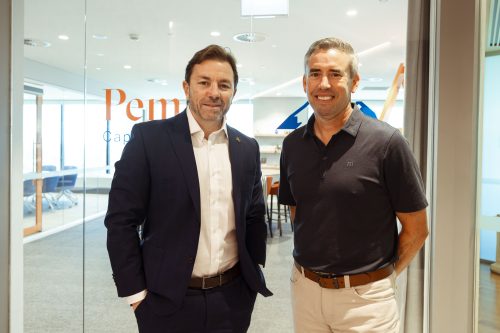Tom Matthews
Private equity funds are structured as closed ended funds. This means they have a finite term (usually 10 years but often with options to extend further). The way these funds typically work is they have an initial investment period (often the first five years of the fund) where the bulk of the capital of the fund is deployed into investments in private companies. The balance of the term of the fund is then used to grow (harvest) and ultimately exit (divest) the portfolio of companies.
Given the lifecycle of a private equity fund, managers usually look to raise successor funds once the current fund approaches being fully invested. This fundraising process typically occurs every 3-5 years.
The private equity lifecycle
As the chart below shows, the phases of a private equity firm’s business model are as follows:

- Collecting money from outside sources (fundraising);
- Investing in private companies (the investment period);
- Managing and improving portfolio of the companies (harvesting); and
- Selling the company after a few years (divestment).
The fundraising process
The first phase of the private equity fund life cycle is the fundraising. It is a procedure through which a private equity manager launches a private equity fund and obtains money from investors. Fundraising’s fundamental goal is to raise money to establish the fund.
Fundraising has different stages, that are called closings. Once a sufficient amount of funding has been secured, and investor commitments have been made, the first closing will begin. Following the first closing (the start of the fund), its operations and first investment prospects can commence. However, the marketing keeps looking for further investors until there is enough investor interest and the target amount (hard cap) is reached.
Where Pemba is at in its fund lifecycle
We’re currently raising our third fund at Pemba. We’re close to final close at our target and hard cap. More importantly, we are delighted that we have been able to secure an amazing roster of top global institutional private equity investors.
A challenging fundraising market
Notwithstanding that we are closing in on a successful fundraising, it is definitely a challenging fundraising environment. Many private equity investors are busy with re-ups with existing private equity manager relationships and don’t have the bandwidth or financial capacity to commit to any new relationships.
Where they do the quality bar is high. Investors want to back private equity managers with good and consistent track records of generating strong returns across their prior funds. Also, investors are looking for private equity managers with genuine differentiation and those that stay true to their investment strategy.
The offsetting factors
Notwithstanding the current challenging fundraising environment, there are a number of offsetting factors that have helped our successful fundraising.
Fundraising for private equity managers in China has slowed dramatically given what’s been happening there economically. Many of the global institutional private equity investors have a regional allocation to Asia, and with China being closed this Asian allocated capital needs to find a home. Accordingly, Australia has been a net beneficiary of less capital flows to China and is seen by many investors as a safe haven.
Our experience
There are a number of observations from our most recent fundraising process at Pemba:
- Co-investment is very important. Many investors think of co-investment (investments alongside the fund into private companies) as a way to achieve fee breaks. Co-investments are usually on discounted economics for investors (sometimes even fee-free and carry-free) relative to the fees investors pay to invest in the fund. Accordingly, being able to demonstrate a strong track record of delivering consistent co-investment to investors has been an important factor in the success of our recent fundraise
- Domestic vs offshore investors. Australian investors are laser focused on fees. Fees charged by private equity fund managers tend to be higher than other asset classes given the size of the team and level of expertise required to consistently generate strong returns over time. Many Australian private equity investors are superannuation funds, who get benchmarked on fees paid rather than net returns (returns generated after fees). At Pemba, we haven’t raised any money domestically. Because of the focus on fees (even at the expense of net returns), it is difficult for us with our operating model (we have in-house direct origination / Originate and value addition / Accelerate teams). Accordingly, at Pemba, we have raised all our money offshore. Global institutional investors understand our operating model and it’s benefits in terms of net returns. What we have found targeting the global institutional private equity investors is you need to invest a lot of time building the relationship with these investors in the pre-marketing phase, and ensuring the timing works for them given their pipeline of re-ups and other fundraises
- ESG. ESG stands for environmental, social and governance. There is much more scrutiny on ESG than ever before. Investors want to ensure that private equity managers are investing responsibly and ideally with positive impact. For example, we have had investors with separate 40 page ESG due diligence questionnaires
- Financial alignment. Investors want to see a high level of GP Commit (personally committed funds from the senior members of the private equity fund manager) and therefore material skin in the game. This ensures financial alignment to the success of the fund.
What next?
If you would like to learn more about the current fundraising environment or our lessons learned, then please email me at tomm@pemba.com.au to find out more.



